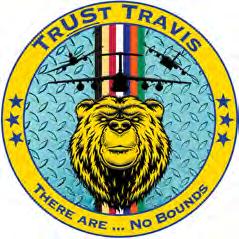

TRAVIS TAILWIND


REFUEL READY
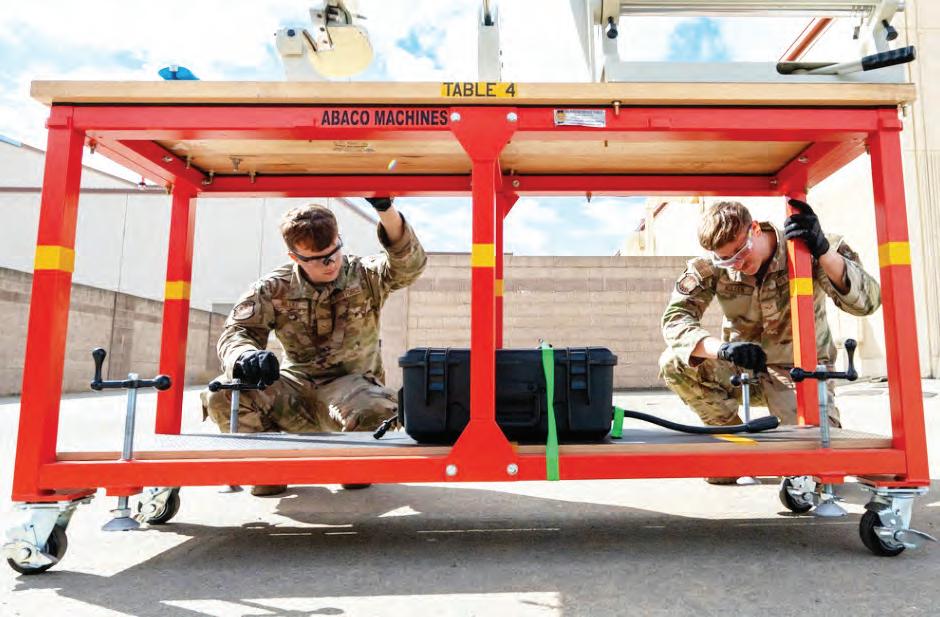
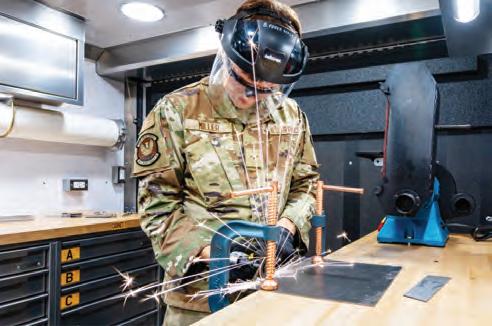
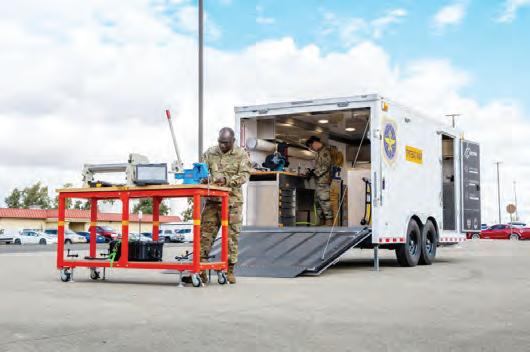
Air Force Test Pilot School Space Test Course started as a three-month program in January 2021, in collaboration with the newly formed U.S. Space Force, and has been growing ever since. The program evolved to a year-long graduate certificate in Space Test Engineering in 2024 and is set to become a full 40-credit hour master’s degree program, known as the Space Test Engineering concentration in January 2026.
TPS graduate, Space Force Guardian and NASA astronaut, Brig. Gen. Nick Hague, who played a crucial role in advocating for the expansion of the Space Test Course, recently visited Edwards Air Force Base to engage with K-12 students, TPS, airmen and their families. From 2005-2006, he was the chief flight test engineer for the 416th Flight Test Squadron at Edwards, previous director of Space Force Test and Evaluation and is now the first-ever Space Force Guardian to travel to space as part of NASA’s Astronaut Corps.
“The strength of the Space Force lies in the dedication and expertise of our airmen and guardians,” Hague said. “It’s important to educate people on why research in space is so important and how it fundamentally impacts everyone’s lives on Earth.”
Fellow NASA astronaut and retired Navy Capt. Sunita Williams were also a part of the Crew-9/ Expedition 72 return from space and accompanied Hague during the visit to TPS.
“The fundamentals of test are universal, applying across all domains,” Karlen said. “This truth was on display as Hague and retired Navy Capt. Williams spoke to the next generation of test leaders and Edwards AFB. We are proud to walk in the footsteps of these test leaders.” Hague’s visit highlighted the critical role of science, technology, engineering and mathematics in national defense and space exploration.
“The graduates of the TPS Space Test Course have already been leading the charge in a variety
Travis BX Protection Plans deliver peace of mind on electronics, jewelry and more
army & air ForCe
exCHaNge serviCe
publiC aFFairs
TRAVIS AIR
FORCE
BASE — The Travis Air Force Base Exchange offers military shoppers options to protect the valuable items they love and use every day.
With Exchange Protection Plans, Travis AFB shoppers are covered against accidental damage from handling portable electronics as well as breakdowns from heat, dust or internal humidity and power surges, along with a no-lemon guarantee that will replace a product which fails three times for the same reason.
Plans are available for electronics, jewelry, appliances, sunglasses, lawn and garden items and more and include 100% parts and labor coverage, worldwide protection and in-home service on qualifying items.
“Travis shoppers can rest easy knowing that the Exchange’s protection plans and warranty options have them covered for their most important purchases,” Travis AFB Exchange General Manager Cathie Byrns said. “Adding the peace of mind of full coverage and preparing for the unexpected means your new products will be taken care
of if the worst happens.”
Plans vary from one year to lifetime warranties and start as low as 2% of the eligible item’s price.
Electronics with Wi-Fi connectivity receive additional benefits with an Exchange Protection Plan, including 24/7 tech support to assist with device setup, smart home integration, internet troubleshooting and more.
Shoppers can add AppleCare+ protection when buying Apple products like laptops, phones, smart watches and tablets to cover screen damage, theft, batteries and more. AppleCare+ includes support direct from Apple experts, allowing shoppers to receive service from those who know the product best.
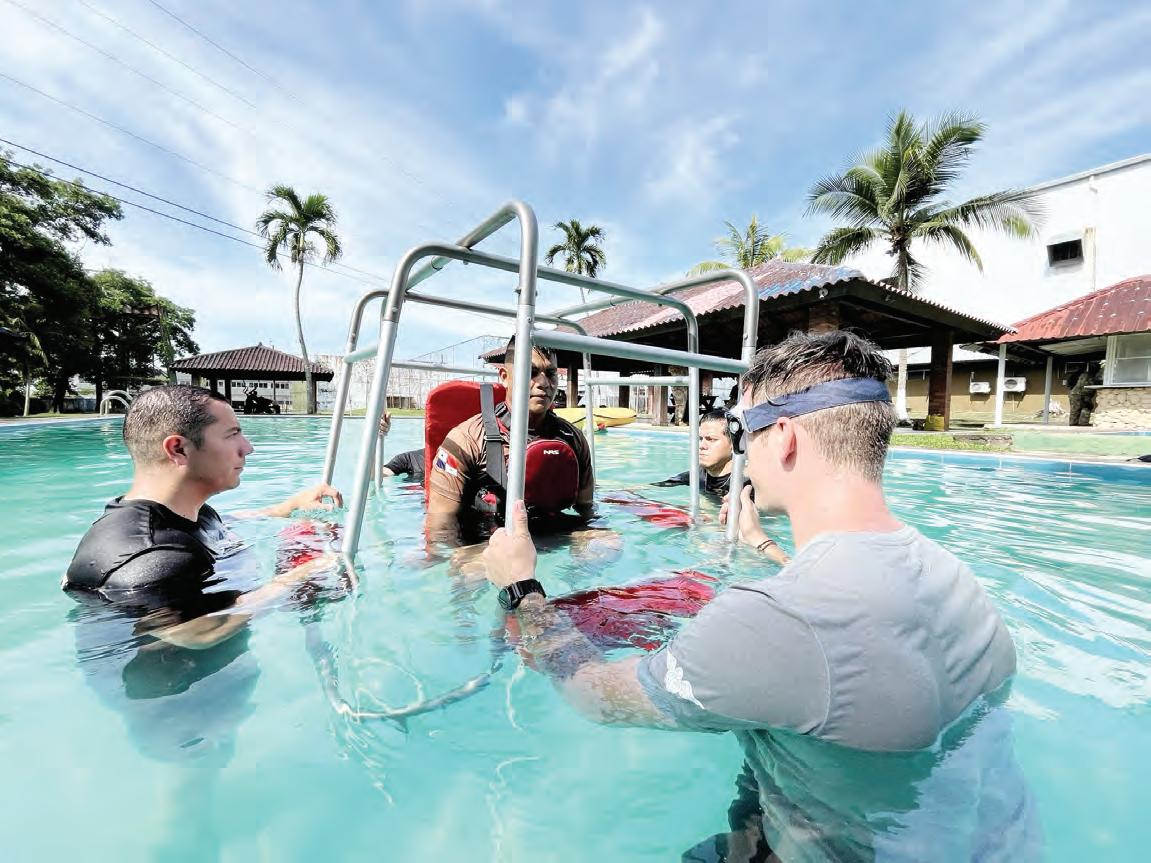
Warranties are available for furniture and area rug purchases. With a Guardsman 5-Year Gold Complete Plus Furniture or Area Rug Protection Plan, shoppers are covered for cleaning and restoration resulting from household stains like food, beverages and pets along with accidental damage to wood or other hard surfaces.
With an Ashley Furniture Warranty, shipping and labor for repairs to defective parts are fully covered up to one year,
See Plan, Page 7
571st MSAS trains Panamanian aircrews, enhances capabilities
Capt. Nestor HerNaNdez 571ST MISSION SUPPORT ADVISORY SQUADRON

TRAVIS TAILWIND

Serving Travis Air Force Base and the surrounding community 1250 Texas St., Fairfield, Calif. 94533 707-425-4646 | Fax 707-425-5924
Publishers: Foy S. McNaughton and T. Burt McNaughton
Advertising Manager: T. Burt McNaughton
Editor: Todd R. Hansen Layout : Aaron Rosenblatt
Content published in Travis Tailwind is not necessarily the official view of, nor is it endorsed by, the U.S. government, the Department of Defense or the Department of the Air Force. The appearance of advertising in the publication, including inserts or supplements, does not constitute an endorsement by the Department of Defense, the Department of the Air Force or the Daily Republic of the products or services advertised.
Those off base who wish to receive home delivery of Travis Tailwind can call 707-427-6975. For information on paid advertising, call 707-425-4646. Send correspondence to: Travis Tailwind/Daily Republic, 1250 Texas St., Fairfield, CA 94533.

PANAMA CITY, Panama — The 571st Mobility Support Advisory Squadron (MSAS) recently completed a dynamic training mission in Panama, further enhancing the operational capabilities of the Panamanian National Air and Naval Service (SENAN). The air advisors delivered tailored instruction across critical areas including warehouse operations, search and rescue survival operations, and King Air sensor operations, the effort was part of an ongoing theater security cooperation initiative to enhance bilateral capabilities and shared regional interests.
Air advisors focused on optimizing SENAN’s logistics. A joint evaluation by logistics SMEs, the Technical Assistance Field Team (TAFT), and SENAN personnel assessed integrated Warehouse Management System (WMS) solutions.
Tech. Sgt. Victor Campos of the TAFT noted the feasible implementation of the Manager+ system for enhanced maintenance and supply management. This collaborative effort is guiding forthcoming modernization and interoperability, streamlining warehousing and maintenance processes.
To bolster search and rescue (SAR) readiness, Subject Matter Experts

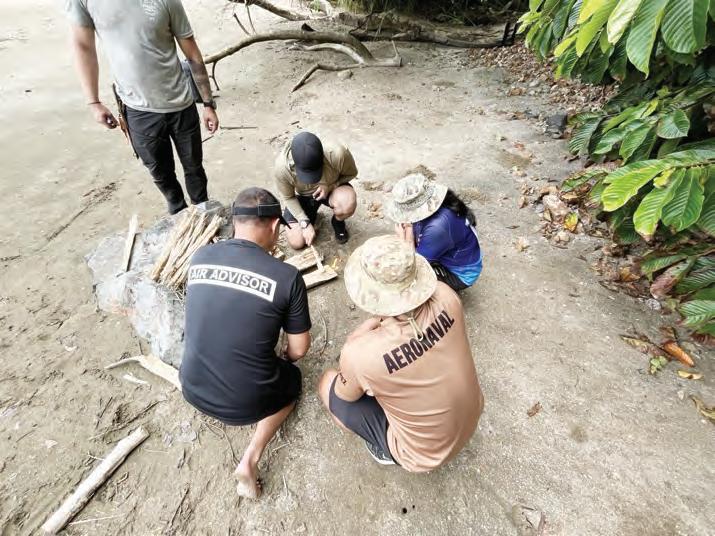

involved 137th Special Operations Wing sensor operators. They conducted a joint exercise with SENAN aircrew, focusing on different phases of target identification for intelligence, surveillance, and reconnaissance (ISR) missions. King Air SMEs integrated mission planning, sensor employment, target acquisition, and data exploitation, aiming to enhance regional security and counter illicit activities.
(SMEs) instructed land and water survival techniques, prioritizing the five survival needs to enhance aircrew development. MSAS air advisors also conducted Shallow
Water Egress Training (SWET) with SENAN SAR personnel, honing their safety and emergency response skills.
A particularly impactful element of the mission
The 571st MSAS strengthens partner nation capabilities through training, advising, and assisting in airpower development. This mission to Panama showcases the enduring U.S. commitment to security cooperation, fostering regional stability, and building stronger partnerships.







Courtesy photos
Subject Matter Experts instruct water survival techniques a dynamic training mission in Panama.
Subject Matter Experts give instructions during a dynamic training mission in Panama.
Members of the 571st Mobility Support Advisory Squadron recently completed a dynamic training mission in Panama, where air advisors delivered tailored instruction across critical areas including warehouse operations, search and rescue survival operations, and King Air sensor operations.
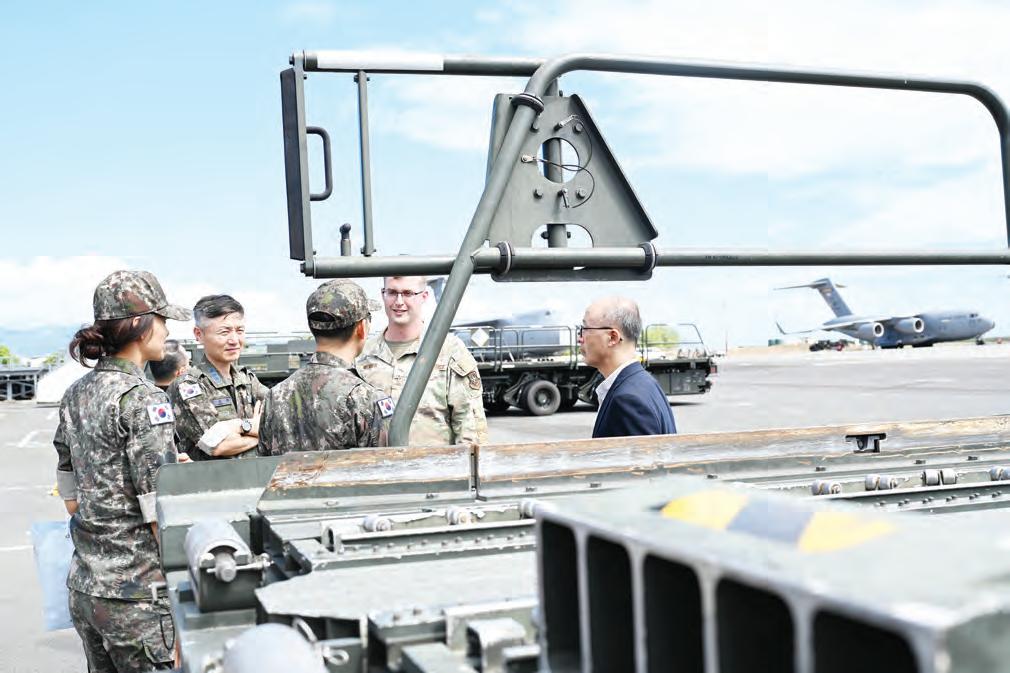
U.S.-ROK ATWG tour with 515th AMOW and 735th AMS
Joint Base Pearl HarborHickam, Hawai‘i — The 515th Air Mobility Operations Wing and 735th Air Mobility Squadron welcomed members of the U.S.-Republic of Korea Air Transportation Working Group (ATWG) to Joint Base Pearl HarborHickam, Hawai‘i, Sept. 18, reaffirming a decades-long partnership and advancing future cooperation under the Mutual Airlift Support Agreement (MASA).
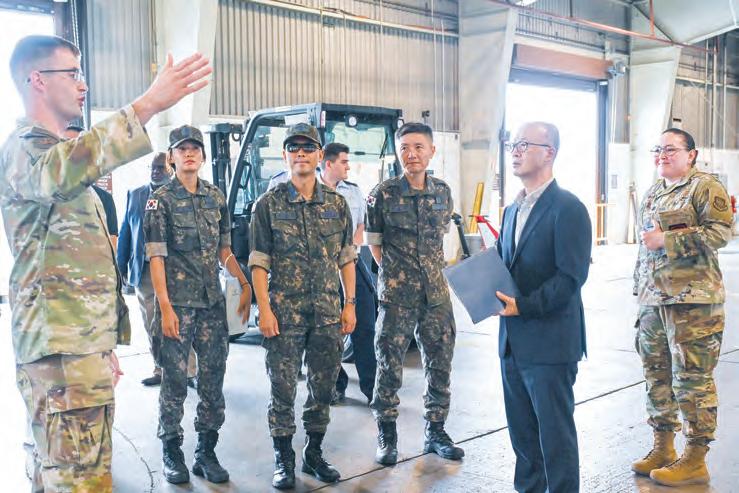
Navy concludes exercise CARAT Timor-Leste 2025
lT j g. Camillia NguyeN COMMAND DESTROYER SQUADRON 7
DILI, Timor-Leste —
The U.S. Navy and Timor-Leste Defense Forces (F-FDTL), also known as Falintil-Forças de Defesa de Timor-Leste (F-FDTL), concluded CARAT Timor-Leste 2025, Sept. 26, after a weeklong exchange of expertise, training scenarios, and relationship-building activities in Dili.
Starting Sept. 22, the two partner nations held subject matter expert exchanges (SMEEs), volunteered for community relations events (COMRELs), and participated in sports days.
“We are grateful to our Timorese partners who graciously hosted us for another successful CARAT this year,” said Capt. Matt Scarlett, commodore, Destroyer Squadron (DESRON) 7 and U.S. head of delegation. “In just one week, we were able to flex our interoperability through a series of complex training sessions, ultimately
strengthening our ability to defend a free IndoPacific region.”
Ashore, SMEEs took place in classroom settings and service members volunteered at an orphanage and education center during community relations events. The U.S. 7th Fleet and Timorese navy bands performed together in joint concerts at the Ministry of Youth, Sports, Art and Culture, and the Timor Plaza Mall.
“The CARAT exercise is particularly relevant in the current regional and international context,” said Lieutenant General Falur Rate Laek, chief of defense, F-FDTL. “This exercise provides an invaluable opportunity to develop capabilities, strengthen interoperability, and consolidate bonds of trust between our forces.”
U.S. assets participating in the exercise include the Independence-variant littoral combat ship USS Cincinnati (LCS 20); a P-8A Poseidon attached
m ass CommuNiCaTioN speCialisT 1sT Class CameroN C. edy U.S. NAVY
The ATWG, a vital component of the U.S.-ROK alliance, oversees the planning and coordination of air transportation operations that support combined readiness and contingency response on the Korean Peninsula. Renewed in 2024 for another decade, MASA enables the two nations to exchange airlift capacity during crises, enhancing their ability to rapidly move personnel, equipment, and supplies when and where they are needed.
Tech Sgt. Tory Weaver, 735th Air Mobility Squadron Noncommissioned Officer in Charge of Aircraft Services, leads members of the U.S.-Republic of Korea Air Transportation Working Group on a tour of the 735 AMS freight warehouse at Joint Base Pearl HarborHickam, Hawai’i, Sept. 18. The Air Transportation Working Group aids in coordinating airlift operations between the two countries.
Indo-Pacific.
During the visit, Col. Tyler Robertson,
515 AMOW deputy commander, provided an overview of the wing’s mission and its critical role in enabling global mobility operations throughout the
“This partnership is built on trust, shared values, and a common
See ATWG, Page 6
Navy receives Spain’s Premio Especial de la Armada, praises decades of trust and cooperation
u s. NaVal ForCes europe
aNd a FriCa publiC a FFairs
MADRID, Spain — Adm. Stuart B. Munsch, commander, U.S. Naval Forces Europe and Africa (NAVEUR/NAVAF), accepted the Armada Española’s Premio Especial de la Armada award on behalf of the United States Navy during a ceremony in Madrid, Spain, Sept. 25. The Premio Especial de la Armada recognizes the U.S. Navy for its enduring connection with the Armada Española and cel-
ebrates the long-standing, significant relationship between the two navies.
“I am proud to be here and represent the entire U.S. Navy in accepting the Premio Especial de la Armada,” said Munsch. “This recognition, especially in the year of the U.S. Navy’s 250th birthday, honors the bond of trust and cooperation that exists between our two navies and our nations.”
U.S. and Spanish naval forces operate together across the Western Mediterranean, the Atlantic

Ocean, and the Strait of Gibraltar, safeguarding sea lines of communication, deterring aggression, and enhancing collective defense.
“Our shared commitment to the freedom of the seas, to the deterrence of our adversaries and to the defense of peace – and the prosperity it enables – requires collective work and international cooperation built on a foundation of trust and cooperation,” Munsch said.
From the five U.S.


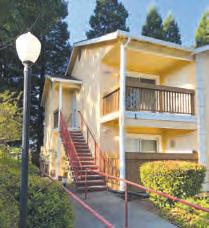

Navy ships based at Naval Station Rota, to integration in NATO maritime task groups and See Premio, Page 7
TROIA, Portugal — Commander, Task Force (CTF) 66 conducted a live robotic and autonomous systems (RAS) demonstration with Allies and partners during the experimentation exercise Robotic Experimentation and Prototyping with Maritime Unmanned Systems (REPMUS) / Dynamic Messenger 2025, in Troia, Portugal, Sept. 25.
Nations that participated in the live RAS demonstration include Belgium, Denmark, Estonia, France, Germany, Norway, Portugal, Spain, Sweden, Ukraine, United Kingdom, and United States.
“We continue to


advance our robotic and autonomous systems through ongoing testing and combined training with partners and their unmanned systems,” said Adm. Stuart B. Munsch, commander, U.S. Naval Forces Europe and Africa (NAVEUR/NAVAF. “We deeply appreciate our Ally, Portugal, for their leadership in maritime experimentation and unmanned systems. Our collective capability is only getting stronger.”
Taking place near the Portuguese Navy’s Operational Experimentation Centre (CEOM), the live RAS demonstration deployed two groups of unmanned surface vessels (USVs) simulating a swarming attack, with CTF-66 deploying three Global Autonomous Reconnaissance Crafts See CTF-66, Page 4

See CARAT, Page 6
Blue Ridge, 7th Fleet flagship, visits Busan, South Korea
comm Ander U.S. 7TH FLEET
BUSAN, South Korea — U.S. 7th Fleet flagship USS Blue Ridge (LCC 19) arrived in Busan, South Korea for a port visit, Sept. 25, after completing the trilateral exercise Freedom Edge followed by a visit to Pyeongtaek and Republic of Korea 2nd Fleet. This arrival in Busan marks the first time since 2020 that Blue Ridge has visited Busan.
During this port visit, leadership from the U.S. 7th Fleet flagship is scheduled to meet with their Republic of Korea (ROK) Navy counterparts and local leaders to discuss ways of improving operational readiness, advancing future military capabilities, and enhancing the U.S.-ROK bilateral relationship overall. The U.S. and ROK navies routinely conduct multi-domain military exercises, such as Freedom Edge and Ulchi Freedom Shield.
In addition, Sailors from Blue Ridge and U.S. 7th Fleet are scheduled to participate in a series of in-port activities to include band performances, community relation events, and ship tours.
CTF-66
From Page 3
(GARC) in response to disrupt the attacking USVs and protect critical infrastructure from harm.
This routine demonstration tests and validates U.S. and partner robotic and autonomous systems’ ability to protect critical infrastructure, and enhances interoperability within the NATO’s allied and partner nations in employing unmanned systems to execute national tasking.
“CTF-66 is focused on adaptation, which enables a warfighting edge and warfighting advantage,” said Rear Adm. Michael S. Mattis, commander, CTF-66. “Sharpening that warfighting edge is pushing the capabilities and limits of our RAS with Allies and partners, and that’s exactly what we’re doing during REPMUS/Dynamic Messenger 2025.”
REPMUS 2025 is a Portuguese-led experimentation exercise that focuses on maritime unmanned systems exper-
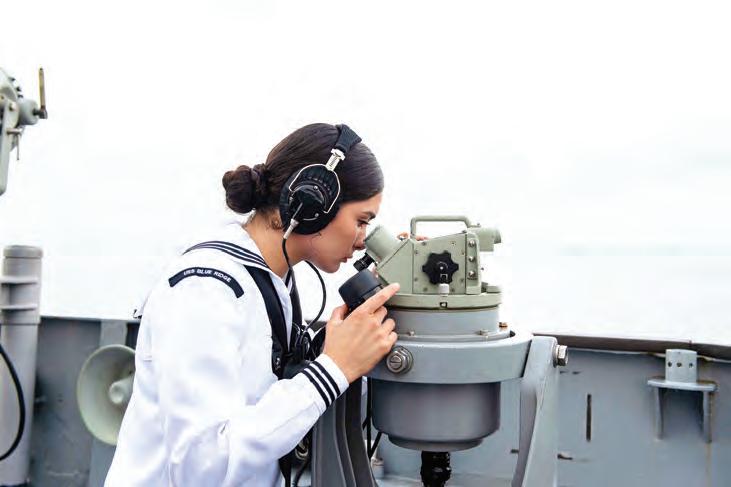
“The great city of Busan awaits the Sailors and staff on USS Blue Ridge - it is another powerful reminder of our ironclad commitment to the ROK-U.S. alliance and the strength of our combined maritime presence,” said Rear Adm. Sharif H. Calfee, Commander, U.S. Naval Forces Korea. “As our Sailors explore and learn about this beautiful city, they demonstrate the shared commitment of the United States and the Republic of Korea to
imentation, capability development and interoperability, highlighting NATO’s ability to trial and integrate uncrewed systems into the operational environment.
REPMUS 2025 is combined with exercise Dynamic Messenger (DYMS), an operational experimentation exercise led by NATO’s Allied Maritime Command to promote adaptation of capabilities, support agile modernization of Allied Maritime forces, and gain operational advantage across the Alliance.
REPMUS / Dynamic Messenger 2025 integrates unmanned systems into NATO’s standing Naval Forces, resulting in both national maritime capability development and an exponential growth in RAS capability across the Alliance. The exercise also supports NATO’s broader Digital Transformation goals by improving information sharing, data management, and the integration of advanced technologies into command structures.
Established in 2024 to deploy and employ RAS with Navy, joint, and NATO
regional security, stability, and prosperity.”
U.S. 7th Fleet staff, embarked aboard Blue Ridge, commands the world’s largest forwarddeployed fleet with the primary mission of providing operational control and planning for its forces in the Western Pacific and Indian Oceans, while promoting regional stability and maritime security through engagements with allies and partners.
The Blue Ridge and embarked U.S. 7th Fleet
partners, CTF-66 utilizes RAS in conjunction with conventional manned platforms and spaced-based capabilities to expand Maritime Domain Awareness, develop defense measures against adversarial use of RAS, innovate asymmetric fighting, and in the future, deliver lethal effects, if necessary.
Commander, U.S. 6th Fleet, headquartered in Naples, Italy, conducts the full spectrum of joint and naval operations, often in concert with allied and interagency partners to advance U.S. national interests, security and stability in Europe and Africa, and freedom of navigation in and around the Mediterranean.
For over 80 years, NAVEUR/NAVAF has forged strategic relationships with Allies and partners, leveraging a foundation of shared values to preserve security and stability. Headquartered in Naples, Italy, NAVEUR/NAVAF operates U.S. naval forces in the U.S. European Command and U.S. Africa Command areas of responsibility.
staff conduct regular IndoPacific patrols to deter aggression, strengthen alliances and partnerships, and advance future warfighting capabilities.
visit the Travis BX to participate in the free, interactive event.
“Supporting military families goes beyond the essentials – it’s about creating moments that matter,” said Travis Exchange General Manager Cathie Byrns. “These events are one way we’re able to serve those who serve.”
Pre-registration for events is not required. For more information, shoppers can contact the Travis Exchange or visit the Travis Exchange’s social media pages.








































Mass Communication Specialist Seaman Andres Fonts/U.S. Navy file
Quartermaster 3rd Class Lauren Davilla stands bridge lookout watch about U.S. 7th Fleet flagship USS Blue Ridge while sailing into Busan, South Korea, Sept. 25.
1st Cavalry Division conducts first Switchblade
600 Loitering Munition System live-fire exercise
HeatHer asHley
FORT HOOD PUBLIC AFFAIRS OFFICE
FORT HOOD, Texas — As part of Pegasus Charge, 1st Cavalry Division’s effort in support of the Army’s “Transforming in Contact” initiative to modernize armored formations, soldiers assigned to the 2nd Armored Brigade Combat Team, 1st Cavalry Division, conducted Fort Hood’s first live-fire exercise of the Switchblade 600 Loitering Munition System, Sept. 15.
The Switchblade 600 – a tube-launched, unmanned aircraft system – has already seen extensive use by Special Operations Forces, light infantry units and foreign partners. The 1st Cavalry Division is among the first armored units to field the system.
“This is the first time for all of our soldiers to see these munitions fired, and you can feel the excitement in the air,” said Army Capt. Jeffrey Weller, Multifunctional Reconnaissance Troop commander, 2nd Armored Brigade Combat Team, 1st Cavalry Division. “The
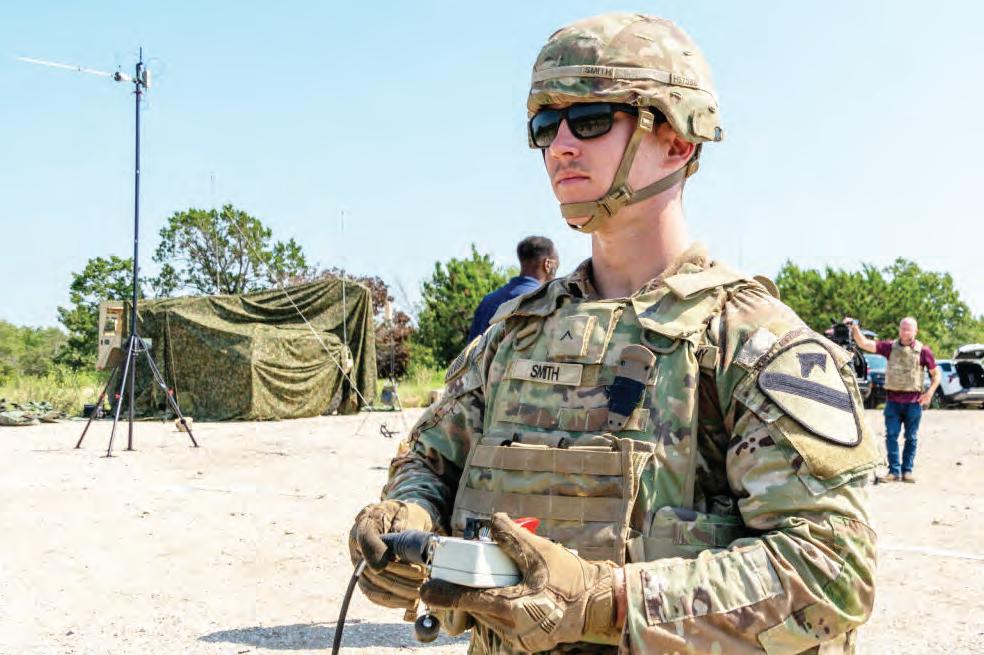
Switchblade enables the brigade to engage targets with precision between 5 and 15 kilometers in front of our forward line of troops, extending our reach and lethality.”
Modernizing the fight
The Army’s broader Transforming in Contact initiative aims to overhaul how armored formations fight by integrating new
technologies, particularly drones and advanced communications.
“A huge thing the Army has seen across multiple battlefields, whether in Ukraine or elsewhere, is the rapid mod-
ernization and high usage of drones,” Weller said. “We’re taking those lessons learned and revamping our [unmanned aircraft] systems to stay ahead of adversaries.”
Roughly 5 feet long and weighing 75 pounds, the battery-powered Switchblade 600 resembles a drone, but carries a Javelin multipurpose warhead. It has a flight time of 40 to 45 minutes, a range of up to 27 miles and delivers a 5-pound explosive payload.
“It’s a remote-controlled missile that flies like a drone until it gets to the target,” explained a flight operations supervisor with the system’s manufacturer. “The operator uses onboard cameras to identify, select and engage the target.”
Once launched from its tube, the Switchblade can navigate through waypoints, loiter over the target area and strike with precision. Operators also retain the ability to wave off a strike mid-flight if conditions change.
“The Switchblade allows us to target vehicles or small






























Spc. Julian Winston/U.S. Army file
Pvt. Hunter Smith, a combat engineer assigned to the 1st Cavalry Division, prepares to fire during a
Switchblade 600 Loitering Munition System live-fire exercise at Fort Hood, Texas, Sept. 15. See Live-fire, Page 7
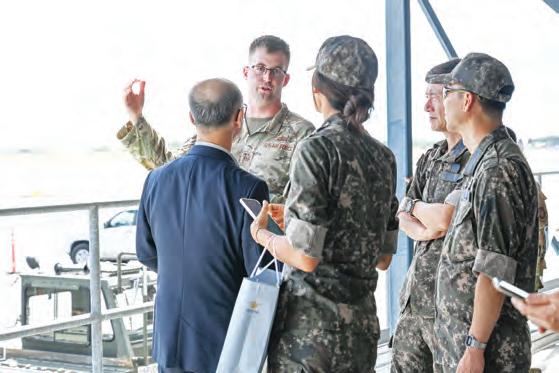
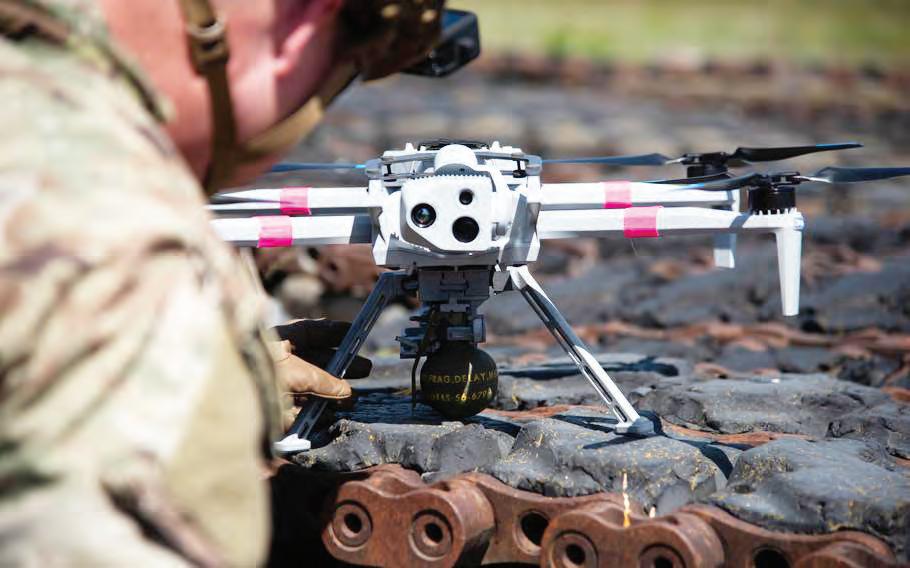

























Space
From Page 1
of research development test and evaluation roles for the Space Force,” said Andrew Freeborn, Technical Director of Space at TPS. “The partnership between the school and the Space Force has been nothing short of amazing. Brig. Gen. Hague has really personified that in his dual roles as a Space Force guardian and NASA astronaut.”
The U.S. Air Force TPS, in collaboration with Space Training and Readiness Command and Space Delta 12 (STARCOM), educates up to 24 guardians, airmen and joint partners annually to prepare them to assume leadership roles in the space test and evaluation enterprise.
This initiative will produce expert test leaders capable of developing and validating advanced spacebased capabilities essential
uates will be equipped with specialized skills to plan, execute, analyze and report on developmental and operational tests of complex space systems.
“The Space Force through STARCOM, made significant investments into the partnership with U.S. Air Force Test Pilot School and Edwards Air Force Base to produce professional guardian testers with a multi-domain mindset capable of leading the service in safely pushing the limits of our space systems by ensuring they are combat-credible and ready for the joint fight,” said Lt. Col. David Heinz, U.S. Space Force Deputy Commandant-Space at U.S. Air Force TPS.
“It becomes more critical as guardians around the globe are responsible for bringing stability to the space domain,” Hague said. “What happens here at Edwards is extremely impactful to the space mission and I wanted to get out here and say thanks
US eyes project to give 500-plus troops Norway airfield digs
John VandiVer STARS AND STRIPES
OSLO, Norway — The U.S. military is moving ahead on development of a Norwegian airfield into a place where American and allied forces can be deployed in a crisis.
The U.S. Army Corps of Engineers Europe District said in a contract notice published Monday that it is seeking proposals to prepare a “beddown” site for 576 military personnel at Rygge Air Station in southern Norway.
The project, which will cost between $5 million and $10 million, calls for various site improvements related to “base expeditionary airfield resources” to support troops, the notice stated.
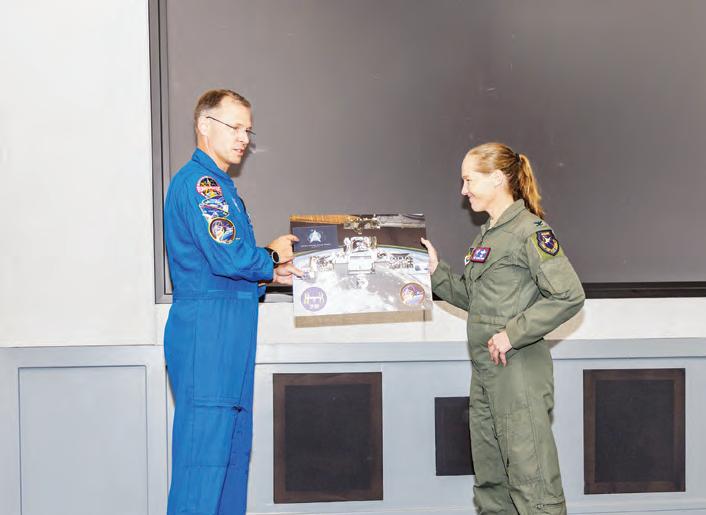
Premio
From Page 3
carrier strike group operations, the two navies routinely train together. In 2025, the U.S. Navy and Armada demonstrated their interoperability and shared commitment in exercises like Formidable Shield 2025, Sea Breeze 2025, Neptune Strike 2025, and Dynamic Messenger/ REPMUS 2025.
Munsch congratulated the Armada’s continued investment in modern capabilities, to include the recent launch of the F-111 Aegis FFG in Ferrol as another example of a collaborative defense effort between the U.S.
Plan
From Page 2
and Spain and collective effort to build a credible and capable deterrence for the Alliance.
Concluding his remarks, Munsch said the award reflects the deep and enduring bond of trust and cooperation that the United States and Spain share together in the past, present, and future. For over 80 years, NAVEUR/NAVAF has forged strategic relationships with allies and partners, leveraging a foundation of shared values to share the duties of preserving security and stability. Headquartered in Naples, Italy, NAVEUR/ NAVAF operates U.S. naval forces in the U.S. European Command and U.S. Africa Command areas of responsibility.
with replacement parts remaining covered after the one-year period. Shoppers can add protection plans at checkout both in stores and online at ShopMyExchange.com. More information can be found at ShopMyExchange. com/customer-service/ warranties. Department of Defense and Coast Guard civilians and retirees and honorably discharged veterans who have confirmed their eligibility to shop online may also purchase the plans. Veterans can visit https:// aafes.media/paveterans to learn more. DoD civilians can visit https://aafes. media/cacbenefitspa.


C. Scott,

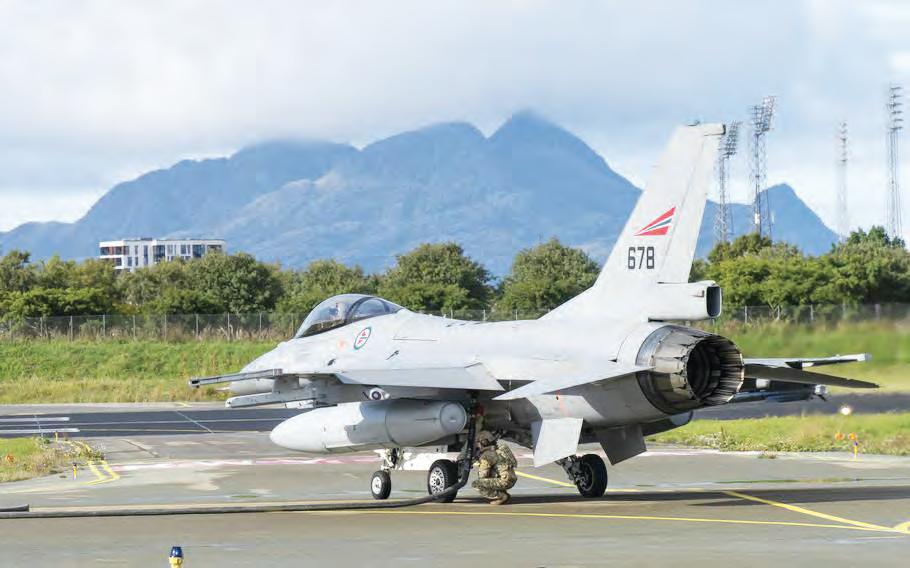
The bed-down site is designed to “facilitate the rapid deployment of hundreds of airmen, including shelters, dining facility and other infrastructure should they need to quickly be stationed at Rygge Air Station,” according to a separate 2024 Army statement on the plans.
The initiative is connected to a larger $200 million upgrade at the air station, which is used by American
173rd
From Page 6
effort to rapidly deliver large amounts of new technology to soldiers so they can experiment and innovate, according to the service.
In May, Bayonet established a facility with the capability to produce 200 to 300 aerial drones a month, chiefly for use in military exercises. This week, the team produced 40 systems over three days.
A group of about 11 soldiers builds the simple, quadcopter drones – inspired by similar one-way attack models employed by Ukraine – using an assem-
Live-fire
From Page 5
groups of personnel from much farther away than before,” Weller said. “It increases our lethality, minimizes collateral damage and helps protect soldiers on the front lines.”
Before the live-fire exercise, soldiers completed a five-day training course with the manufacturer, during which they learned to set up, arm and program the drones for flight and strike missions.
troops in Norway.
That project and others are designed to support rapid troop deployments and larger air force formations in the High North, a region where countering Russia has become a top priority for NATO and U.S. European Command.
The funding is tied to U.S. European Command’s European Deterrence Initiative, which is focused on improving military infrastructure that
bly-line method and a 3D printer in a small lab at U.S. Army Garrison Italy in Vicenza.
The drones are powered by a lithium polymer battery and cost roughly $1,000 to $1,500 to design, build and operate, Gasparri said.
They can carry an explosive payload capable of destroying a tank, he said, adding that the technology is a “considerable advancement.”
The unit also has been prototyping similar systems in Germany since November 2024, the Army said.
In addition, Bayonet is researching and experimenting with counter-drone systems that can detect and defeat an adversary’s unmanned aerial vehicles as well as
Army Spc. Drake Cross, a Switchblade operator who has flown RQ-7 Shadow and RQ-28 Quadcopter drones for the division, said this was his first experience with a munition-carrying UAS.
“Everything else I’ve flown has been for surveillance and target acquisition,” Cross said. “This is the first one where I can actually deliver a round. It’s exciting because it saves soldiers’ lives by hitting targets without putting us in danger.”
allied troops could need in a crisis.
The Arctic has taken on added importance in recent years for the Pentagon, given concerns about Russia’s growing military presence there.
China also has signaled an intent to play a larger role in the region, declaring itself in 2018 a “nearArctic country” with vested interests.
Other projects at
ground robots. For 1st Lt. Kadin Peterman, Bayonet’s experimentation with the robots has a deep, personal connection. He previously led a platoon of sappers, or combat engineers, and said the robots can remove some of the danger inherent in that job.
“We can send explosives up to the breach without sending a person and still conduct our engineer task,” Peterman said, adding that making sure troops “stay alive as long as possible” keeps him invested in the work.
Gasparri said other areas of study and experimentation for Bayonet include leveraging AI on the battlefield to quickly offer up-to-date analysis. For example, future
Cross said the system was user-friendly and similar to other UAS platforms, adding, “There’s not much of a learning curve. Once you identify and lock onto a target, you can adjust right up until impact to make sure you’re hitting what you want.”
Looking ahead
Weller said the Switchblade is just one example of how Transforming in Contact is reshaping the 1st Cavalry Division’s
Rygge include security improvements, expanded munitions storage and a quick reaction alert facility to store fighter jets. Besides military concerns, there is expected to be more economic competition in the High North, where melting sea ice has raised the prospect of new shipping lanes in the years to come as well as jockeying for access to the wealth of natural resources there.
battle formations could be supported by as many as 300 drones taking videos analyzed by AI and verified by just a handful of soldiers, reducing time and manpower while increasing efficiency, he said.
The team also is experimenting with using multiple drones, called wolf packs, for defending against and destroying an enemy’s air-to-air missile system. That work will bolster the brigade’s ability to deploy anywhere, control the airspace and protect its formation with portable systems that can be thrown out of planes, dropped out of helicopters or put on a soldier to protect them, Gasparri said.
armored formations. He noted that the unit will use the system during their upcoming rotation at the National Training Center at Fort Irwin.
“The battlefield is constantly changing, and the Army has to modernize to keep pace,” he said. “Seeing systems like the Switchblade in action shows us the future of how our formations will fight. It’s a big step toward keeping our soldiers safer and more lethal.”








Michael Washburn/U.S. Air Force file (2020)
An American airman refuels a Norwegian Air Force F-16 Fighting Falcon during an exercise at Rygge Air Station, Norway, Aug. 26, 2020. The U.S. Army Corps of Engineers Europe District is seeking proposals to prepare a “beddown” site for 576 military personnel at the base.
Lindsey Iniguez/412th Test Wing file
Brig. Gen. Nick Hague presents a Space Force flag to Col. Maryann Karlen, Test Pilot School commandant, Aug. 27. The Space Force flag was flown aboard Crew-9 Dragon Freedom and the International Space Station Expedition 71/72 during a 171-day journey traveling over 72 million miles.














